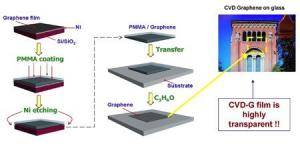Graphene can be used to make antibacterial paper for food packaging
Researchers from Shanghai University has developed two water-based dispersible graphene derivatives that can effectively inhibit the growth of E.coli and have minimal toxic effects on harming cells (cytotoxicity). The two derivatives are based on graphene oxide (GO) and reduced graphene oxide (rGO).
The group tested the antibacterial properties of the GO sheets with E.coli DH5 cells via a luciferase-based ATP assay kit. After two hours incubation with the GO sheets of 20 µg/mL at 37C, the cell metabolic activity of the bacteria fell to around 70 per cent. With a GO concentration of 85 µg/mL, the activity of the E.coli cells fell to just 13 per cent suggesting a strong inhibition ability of GO nanosheets to E.coli, said the researchers.


